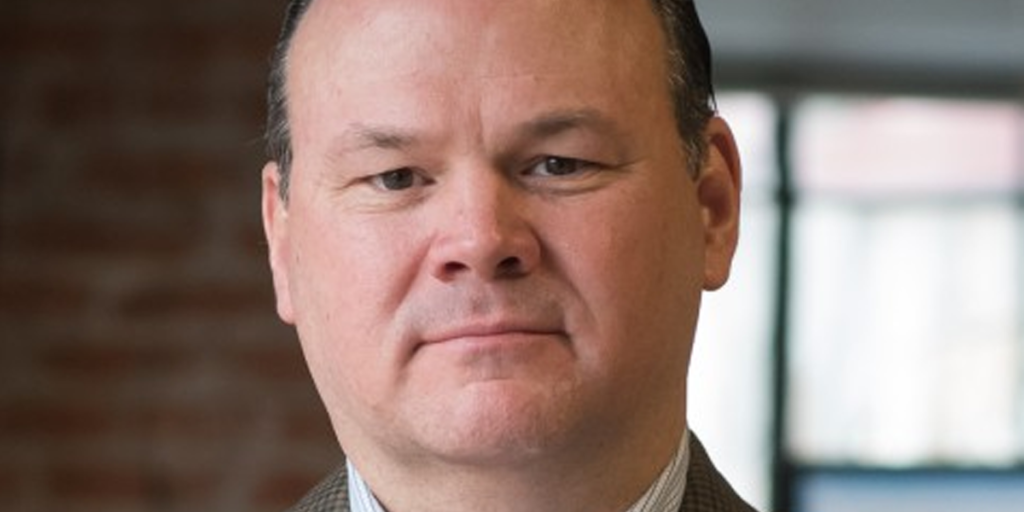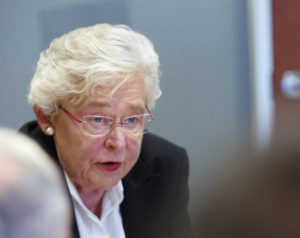Anxiety grows for Donald Trump after raid on his personal lawyer

President Donald Trump and his allies have hit a new level of anxiety after the raid on his personal attorney’s office, fearful of deeper exposure for Trump, his inner circle and his adult children — and more than concerned that they don’t know exactly what is in those records and electronic devices seized last week. There is also some worry that Michael Cohen, the self-described legal fixer who helped make bad stories go away and took a leading role in Trump Organization projects in foreign outposts, may strike a deal with prosecutors out of concern about his own prospects. “I think it’s a huge minefield for Donald Trump and the Trump Organization,” said trial attorney Joseph Cammarata, who represented Paula Jones in her sexual harassment suit against President Bill Clinton. “I think this is on its own track and this train is coming down the track with brute force.” The wild legal show continued to play out Monday, at a court hearing in New York before a federal judge who is considering what to do with the material that the FBI seized from Cohen. The scene was punctuated by dramatic entrances and revelations. Stormy Daniels — the porn actress who alleged she had a sexual affair with the president — made an appearance, stumbling on her high heels as she was swarmed by press. Cohen was forced to reveal that another one of his clients is Fox News host Sean Hannity, a high-profile confidant of the president. Trump left the White House for Florida, for a two-day summit with Japanese Prime Minister Shinzo Abe at the president’s Mar-a-Lago estate. Advisers are hoping the meeting will draw attention from the legal tempest in Washington and New York. On the trip south, White House spokeswoman Sarah Huckabee Sanders sought to put distance between Trump and Cohen, saying: “I believe they’ve still got some ongoing things, but the president has a large number of attorneys, as you know.” The federal raid, carried out a week ago in New York City, sought bank records, information on Cohen’s dealing in the taxi industry, Cohen’s communications with the Trump campaign and information on payments he made in 2016 to former Playboy model Karen McDougal and to Daniels, both of whom allege relationships with Trump. The court proceedings Monday dealt with who gets to look at Cohen’s seized documents and devices before they are turned over to prosecutors. Though Cohen once said he “would take a bullet” for Trump, he is aware of the possible outcome — including potential prison time — and has expressed worry about his family, said a person who has spoken to the lawyer in recent days but is not authorized to discuss private conversations. Cohen has not been charged with anything. Trump’s moods have grown darker in recent days, as he lashes out at the “overreach” of the raid. Further angering the president is that the raid was triggered in part by a referral from special counsel Robert Mueller, who is looking into Russian interference in the 2016 U.S. presidential election. The raid was authorized by the U.S. Attorney for the Southern District of New York. On Twitter Sunday, Trump said that all lawyers are now “deflated and concerned” by the FBI raid on Cohen, adding that “Attorney Client privilege is now a thing of the past.” Trump has also taken to downplaying Cohen’s role. The president also inveighed further against former FBI Director James Comey, who said Monday morning that Trump was morally unfit to be president. That was a few hours after Comey said the same and worse in a highly promoted ABC interview. Many in the White House view the aftershocks of the Cohen raid as potentially more threatening than Mueller’s Russia probe, fearful of what skeletons may be in the lawyer’s closets, according to five officials and outside allies who all spoke on the condition of anonymity to discuss private conversations. “I agree with the consensus forming that it’s very dangerous for the president, probably the most serious thing yet,” said Sol Wisenberg, a defense attorney who was a deputy independent counsel during the Starr special counsel investigation into Clinton. “Even if you shut Mueller down some way, how do you shut down the Southern District (federal court)?” Trump’s anger at the probe has intensified, with him musing publicly about firing Mueller and the man who authorized the probe, Deputy Attorney General Rod Rosenstein. Those around Trump have hoped that this week’s visit to Mar-a-Lago, where he is generally happier, along with the tightly scheduled summit with Abe, would somewhat distract him from Cohen and from Comey’s ongoing publicity tour. But White House aides have also expressed worry that they can control Trump less at his palatial Florida estate, where he is known to seek out counsel from club members and get revved up by their at-times provocative advice. One recent presidential dinner guest was Hannity, a longtime Trump ally whose connection to Cohen shed more light on the attorney who was more than just a lawyer for Trump. Cohen has long been a key power center in the Trump Organization and a fixture along the edges of Trump’s nascent political life. In Cohen’s own estimation, he is Trump’s Ray Donovan, the bruising television character who takes whatever steps are needed to fix problems for the tycoon he serves. He has regularly threatened lawsuits against those who pose a challenge to Trump. He has berated reporters for writing unflattering words about his boss. He has worked with tabloids, including the National Enquirer, to kill unfavorable stories about Trump. He has said he used a home-equity loan to finance a $130,000 payment to Daniels in the final days of the 2016 campaign and did so without Trump’s knowledge. The president has consistently denied a relationship with Daniels, who claims the two had sex not long after first lady Melania Trump gave birth to the couple’s son Barron. He has also pushed back against other claims from women. A
Former first lady Barbara Bush in failing health

Former first lady Barbara Bush is in “failing health” and won’t seek additional medical treatment, a Bush family spokesman said Sunday. “Following a recent series of hospitalizations, and after consulting her family and doctors, Mrs. Bush, now age 92, has decided not to seek additional medical treatment and will instead focus on comfort care,” spokesman Jim McGrath said in a news release. McGrath did not elaborate as to the nature of Bush’s health problems. She has been treated for decades for Graves’ disease, which is a thyroid condition, had heart surgery in 2009 for a severe narrowing of her main heart valve and was hospitalized a year before that for surgery on a perforated ulcer. “It will not surprise those who know her that Barbara Bush has been a rock in the face of her failing health, worrying not for herself — thanks to her abiding faith — but for others,” McGrath said. “She is surrounded by a family she adores, and appreciates the many kind messages and especially the prayers she is receiving.” Bush, who is at home in Houston, is one of only two first ladies who was also the mother of a president. The other was Abigail Adams, wife of John Adams, the nation’s second president, and mother of John Quincy Adams, the sixth president. Bush married George H.W. Bush on Jan. 6, 1945. They had six children and have been married longer than any presidential couple in American history. Eight years after she and her husband left the White House, Mrs. Bush stood with her husband as their son George W. was sworn in as the 43rd president. President Donald Trump’s press secretary, Sarah Huckabee Sanders, said in a statement Sunday evening that “the President’s and first lady’s prayers are with all of the Bush family during this time.” Bush is known for her white hair and her triple-strand fake pearl necklace. Her brown hair began to gray in the 1950s, while her 3-year-old daughter Pauline, known to her family as Robin, underwent treatment for leukemia and eventually died in October 1953. She later said dyed hair didn’t look good on her and credited the color to the public’s perception of her as “everybody’s grandmother.” Her pearls sparked a national fashion trend when she wore them to her husband’s inauguration in 1989. The pearls became synonymous with Bush, who later said she selected them to hide the wrinkles in her neck. The candid admission only bolstered her common sense and down-to-earth public image. Her 93-year-old husband, the nation’s 41st president who served from 1989 to 1993, also has had health issues in recent years. In April 2017, he was hospitalized in Houston for two weeks for a mild case of pneumonia and chronic bronchitis. He was hospitalized months earlier, also for pneumonia. He has a form of Parkinson’s disease and uses a motorized scooter or a wheelchair for mobility. Before being president, he served as a congressman, CIA director and Ronald Reagan’s vice president. Barbara Pierce Bush was born June 8, 1925, in Rye, New York. Her father was the publisher of McCall’s and Redbook magazines. She and George H.W. Bush married when she was 19 and while he was a young naval aviator. After World War II, the Bushes moved to Texas where he went into the oil business. Along with her memoirs, she’s the author of “C. Fred’s Story” and “Millie’s Book,” based on the lives of her dogs. Proceeds from the books benefited adult and family literacy programs. The Barbara Bush Foundation for Family Literacy began during her White House years with the goal of improving the lives of disadvantaged Americans by boosting literacy among parents and their children. The foundation partners with local programs and had awarded more than $40 million as of 2014 to create or expand more than 1,500 literacy programs nationwide. Republished with the permission of the Associated Press.
Supreme Court hearing case about online sales tax collection

The Supreme Court is hearing arguments about whether a rule it announced decades ago in a case involving a catalog retailer should still apply in the age of the internet. The case on Tuesday focuses on businesses’ collection of sales tax on online purchases. Right now, under the decades-old Supreme Court rule, if a business is shipping a product to a state where it doesn’t have an office, warehouse or other physical presence, it doesn’t have to collect the state’s sales tax. Customers are generally supposed to pay the tax to the state themselves, but the vast majority don’t. States say that as a result of the rule and the growth of internet shopping, they’re losing billions of dollars in tax revenue every year. More than 40 states are asking the Supreme Court to abandon the rule. Large retailers such as Apple, Macy’s, Target and Walmart, which have brick-and-mortar stores nationwide, generally collect sales tax from their customers who buy online. But other online sellers that only have a physical presence in a few states can sidestep charging customers sales tax when they’re shipping to addresses outside those states. Sellers who defend the current rule say collecting sales tax nationwide is complex and costly, especially for small sellers. That complexity was a concern for the Supreme Court when it announced the physical presence rule in a case involving a catalog retailer in 1967, a rule it reaffirmed in 1992. But states say software has now made collecting sales tax easy. The case the court is hearing has to do with a law passed by South Dakota in 2016, a law designed to challenge the Supreme Court’s physical presence rule. The law requires out-of-state sellers who do more than $100,000 of business in the state or more than 200 transactions annually with state residents to collect and turn over sales tax to the state. The state wanted out-of-state retailers to begin collecting the tax and sued Overstock.com, home goods company Wayfair and electronics retailer Newegg. The state has conceded in court, however, that it can only win by persuading the Supreme Court to do away with its current physical presence rule. Republished with the permission of the Associated Press.
Alabama mother on mission to stop texting and driving after daughter’s death

Following the tragic death of her daughter in February, an Alabama mother has a new mission: to put an end to distracted driving. Michelle Lunsford is trying to stop distracted driving after her 17-year old daughter Camryn Callaway died after she crashed into the back of a tractor trailer while texting and driving. Lunsford is now publicly speaking out about the dangers of distracted driving, which many consider the “new drunk driving.” On Sunday, she spoke at Union Springs Baptist Church about the dangers and consequences of texting and driving. “That mistake is all it took, but I am the first person to sit here and say I was guilty of that every single day,” Lunsford told ABC 33/40 News. “Not anymore. This is a huge platform that God has given me now. It took away the one thing I cared about in this world and after that happened, I just looked up and said ‘you’ve done this for a reason. I don’t know what it is, but I’m open and you tell me, you show me, please, quickly because this hurts.’” She hopes to work with state lawmakers to tighten up the distracted driving laws. “As a matter of fact, I noticed on the way up here, there was a littering sign – ‘$500 for littering’ – which I completely agree with,” Lunsford added to WBRC. “It’s $25 for your first offense of texting and driving. Now, what’s more important?”
Tax day is here: Americans still largely unaware of tax reform benefits

Federal income tax day is here, marking the final Tax Day under America’s old tax system. With the new system in effect starting the 2018 tax season, a new survey reveals significant misunderstandings about the newly passed income tax reforms, including whether it will be simpler and will save middle-income Americans money. Conducted by the James Madison Institute (JMI), a free-market think tank dedicated to the principles of economic freedom and limited government, the survey found states with more complex tax codes have higher preparation and filing costs for individuals and higher administration costs for state governments. “Predictably, the survey found Americans evenly split between feeling stressed, annoyed, or relieved about their taxes. But many of those surveyed see no relief in sight, despite the benefits in store next year,” stated the results. “Although the tax reforms will substantially simplify income tax filings and will return an estimated $1,000 in additional tax payments to the average middle-income American, many taxpayers – including conservatives – aren’t convinced. The JMI survey found Republicans and Democrats alike generally support the idea of a simplified income tax system. Specifically: 56% of survey respondents support efforts to simplify the federal income tax code to the point where the return could fit on a postcard (59% of Republicans and 54% of Democrats). 71% of those surveyed find the current tax code to be complicated, with only 15% finding it simple and the remaining 14% unsure. “Two central features of the federal tax plan include a lower burden on middle-income households and a simpler process – yet few Americans are aware of these improvements,” said Dr. Robert McClure, JMI’s President and CEO. “The survey findings show that many Americans assume their taxes will become more burdensome and more complicated. Yet while the federal government has simplified the tax code, 6 in 10 Americans live in states with their own complicated state income tax codes. Such complexity comes at a price – for families and states alike.” The survey of 1,343 American adults was conducted April 3-8, 2018, via SurveyMonkey Audience, with respondents representative of American households in terms of political ideology, age, region, and income distribution. Noting that approximately one-third of Americans feel “stressed” about Tax Day, one-third feel “annoyed,” and one-third feel “relieved,” McClure added: “We’re hopeful the number of Americans who can say they feel relieved will increase in the years ahead as they learn more about the benefits of tax reform and the state and federal governments become more dedicated to simplifying their respective tax codes.”
Former senior aide to Donald Trump, Jeff Sessions takes gig with DC consulting firm

Rick Dearborn, former White House Deputy Chief of Staff, has been named partner at the Cypress Group, a D.C.-based strategic advisory and advocacy firm. Dearborn will expand Cypress’ Advisory practice, which works with clients to develop short- and long-term strategic plans to promote government relations as a center of opportunity within an enterprise. “Rick has worked directly with congressional committee chairmen and other high-ranking policymakers to achieve solutions and truly knows how to get things done,” said Pat Cave, the firm’s founding partner. “Rick will serve as a senior advisor to the largest Cypress clients in the energy, technology, health care, finance, and defense sectors.” News of Dearborn’s White House departure surfaced in December, when White House Chief of Staff John Kelly confirmed Dearborn would be stepping down to pursue a career in the private sector. “Rick loyally served the president for two and a half years and brought tremendous energy to the White House staff,” Kelly then said in a statement. “He’s a super guy and it breaks my heart to see him leave, but I look forward to his continued personal friendship and support for the president’s agenda.” Dearborn, who served as chief of staff for former U.S. Sen. Jeff Sessions for 12 years, joined President Donald Trump‘s White House in January. There, he oversaw political operations, public outreach and legislative affairs and has been an integral part of Trump’s effort to manage relations on Capitol Hill. Well respected among Republican leadership and their aides, he also had previous executive branch experience, having served as Assistant Secretary of Energy for Congressional and Intergovernmental Affairs.
Innovate Birmingham prepares students for tech jobs

The 28 graduates of an Innovate Birmingham program are “the full definition of getting it right” according to Birmingham’s mayor and “how workforce development is supposed to work” according to an Alabama Power executive. The graduates were feted at a commencement ceremony at Alabama Power corporate headquarters on April 13 where UAB President Ray Watts presented them with their certificates. Each quarter, the Innovate Birmingham Development Program prepares students for careers in Birmingham’s growing tech sector through training via the I AM BHAM coding bootcamp and Generation IT bootcamp. Friday’s class was the fourth graduating class in the program. Innovate Birmingham holds graduation for tech students from Alabama NewsCenter on Vimeo. I AM BHAM, a 14-week program, offers short-term, fast-track, intensive training for full stack and front-end web development. The 12-week Generation IT program offers an IT specialist training program for students to receive their CompTIA A+ certification. Both programs, held onsite at Innovation Depot in Birmingham, allow students to interact daily with potential employers. More than 25 employers – including corporations such as Alabama Power, BBVA Compass, Regions Financial and Protective Life – support the program and offer graduates jobs. John Hudson, senior vice president of Marketing and Business Development at Alabama Power, said a program that can take someone who was unemployed, train them in a new skill and promise them a job upon graduation “is how workforce development is supposed to work.” “All of us who work on economic development in Birmingham are trying to move this community and this city toward a more technology-based economy,” Hudson said. “If we’re going to do that, workforce is going to continue to be prominent in us getting there.” Birmingham Mayor Randall Woodfin said the Magic City’s economy is hitched to growing the technology industry. “As we look at what our strengths are and what our strengths can be, IT technology and innovation is something we need to triple down on and have a full investment in,” Woodfin said. He said economic development is ultimately an investment in people and the Innovate Birmingham program epitomizes that idea. “This is a full definition of getting it right,” Woodfin said. Watts said the program is an extension of UAB’s mission. “As we looked at the needs in Birmingham, we realized there was a subset of our young people who have not had the opportunity yet to be in the right place at the right time to develop those educational skills,” he said. The program was made possible, in large part, by a $6 million grant from the U.S. Department of Labor. Josh Carpenter, director of the Birmingham Office of Economic Development, was instrumental in constructing the partnership that pursued that grant when he was at UAB. He was at the commencement. “Sustaining the economy through a qualified and diverse workforce is absolutely fundamental to our success in creating the innovation of the future,” Carpenter said. “This is laying a pipeline for us to be able to showcase around the country that we have a best-in-class program that can train people and equip them with the skills they need to succeed very quickly in a workforce that demands more nimble and qualified talent.” Watts said he was doing more than handing graduates their certifications: He was handing them a better Birmingham. “It’s a great opportunity to give our young people skills and knowledge that will allow them to get a really good job and provide for their families, and help their neighborhoods and the entire city be successful,” Watts said. Republished with the permission of Alabama Newscenter.


